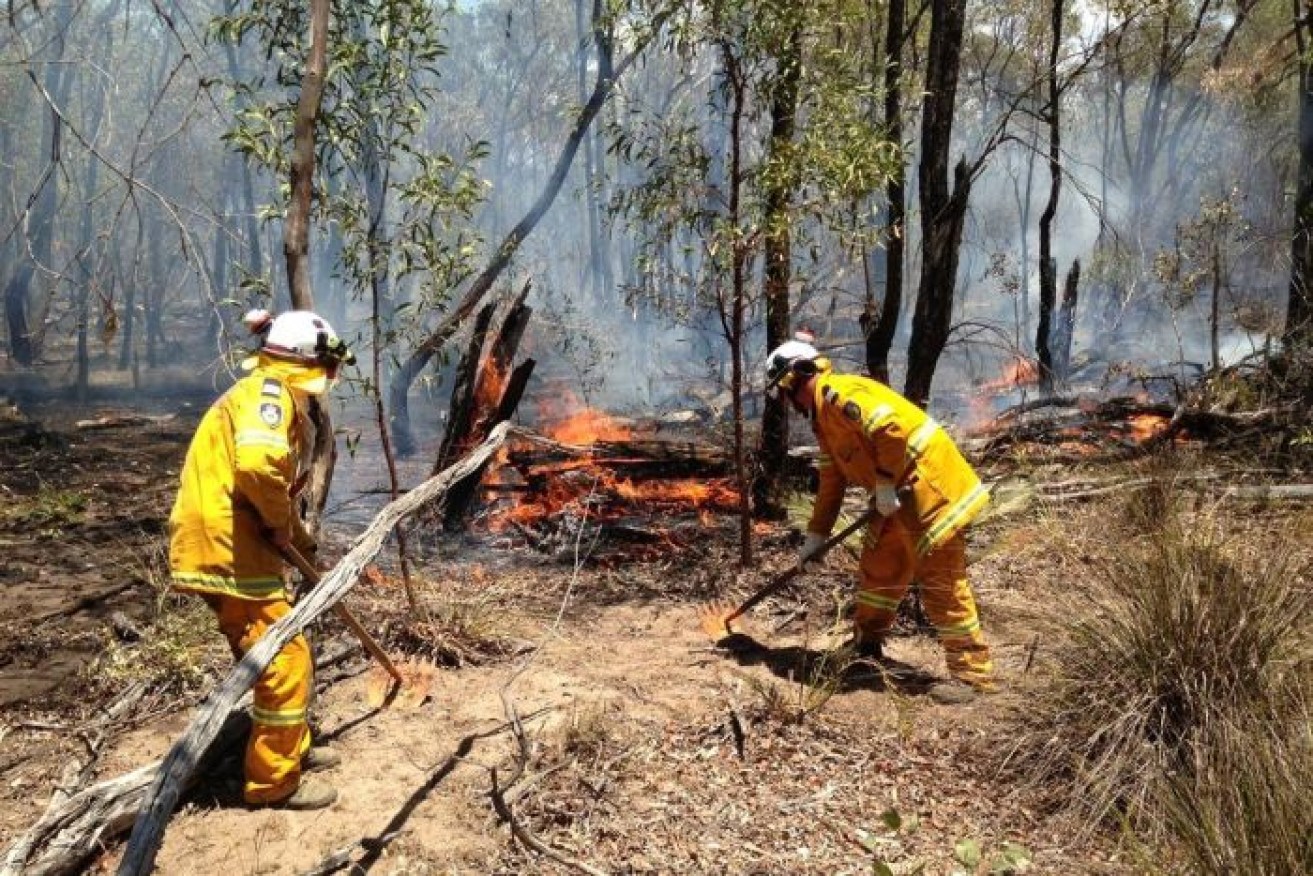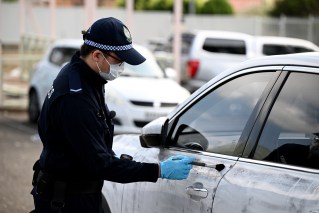NSW braces for early bushfire season – with too little water

Firefighters in NSW are warning of an early bushfire season. Photo: ABC
Firefighters in parched NSW face the unenviable predicament of preparing for the impending fire season in a state where 98 per cent is in drought or short on water.
“When you’ve got a drought like that, particularly in bush areas, the fuel is so dry it doesn’t take a lot to get it to burn and burn hot,” acting Rural Fire Service deputy commissioner Rob Rogers said.
August was traditionally a cool but windy month, but add to that the dry fuel load and it could be a recipe for disaster.
“You’ve got the dry fuel and the strong winds – if you add a high temperature, and if we don’t get an easing of the drought through rainfall, then that’s quite concerning going into summer proper,” he said.
Resources already depleted
In the state’s north, the community of Tenterfield does not have enough water to supply the townsfolk, let alone an allocation of the precious resource to fight fires.
The drought has left the town supply with less than 200 days of water, requiring the Tenterfield Council to take the drastic measure of bringing in a temporary desalination plant.
In February this year, the region depleted a lot of its water resources fighting fires,
The RFS pulled water from private dams and even household tanks which then had to be replenished.
Tenterfield local emergency management officer Barry Frew said some of that has been restored.
“We used potable water from our town supply to top those up and where water was taken from dams, it was replaced through Department of Primary Industry resources,” he said.
Bushfire season begins today – in the Mid North Coast, New England, Northern Tablelands and South East regions of NSW – and a fire permit will be needed to light fires.
RFS superintendent Chris Wallbridge said applications from landholders will be scrutinised
“With the conditions currently, lack of ground water et cetera we’re not real keen to issue too many permits unless they are absolutely necessary.”

Bushfires swept through parts of NSW in February, depleting water resources. Photo: ABC
Fighting fire without water
Water, often the quickest and most effective resource to fight fires, is not the only tool available to crews.
Hand tools like hoes and even heavy-duty leaf blowers are part of a firefighters toolkit to remove fuel away from control lines.
Heavy plant equipment like graders and bulldozers also swing into action for large-scale fires, creating bare control lines in the path of the fire.
“We’ll go ahead of the fire and when it’s safe to do so, we’ll light another fire to burn out the fuel ahead of the blaze to try and contain it that way,” deputy commissioner Rogers said.
He said these techniques will be implemented much earlier this year to try and conserve water, but even that has implications.
“They work when you can get them in in the cool of night, but when it’s in the middle of the day it’s pretty hard to do,” he said.
“You run the risk of that fire [backburn] getting away and advancing the fire further.”
Tactical response from the air
Aerial firefighters, which were often deployed across the state by the RFS or National Parks Authorities, said they too were using water sparingly.
Fleet Helicopters based near Armidale has a bomber helicopter called Lucy, which can dump 1400 litres per bucket on a fire.
“That could be up to 100 loads per day in direct attacks,” owner Lachie Onslow said.
But where there was little water, the craft are used strategically instead, becoming more of a safety net while crews below work on fire breaks.
Mr Onslow said the helicopter would hover above the fire crews holding a load of water, which can then be dropped in the event that the blaze gets away from the ground crews.
“We’re not using a lot of water, but that drop might be the critical drop that puts the fire out before it becomes a fire front,” Mr Onslow said.
Other technology like buoy walls (similar to small portable swimming pools) can be set up as a reservoir.
Fleet Helicopters has also installed pumping equipment at the bottom of its buckets so it can suck water from rivers and streams.
“We don’t just throw a lot of water at something and hope,” he said.
“A little bit of water in the right spot at the right time can make a huge difference.”
With 98 percent of the state in drought, the RFS assured landholders it would not use precious water resources without permission.
“Where we do use water, particularly from a farmers property, please understand we will record that and we will undertake to get that water replenished,” deputy commissioner Rogers said.








